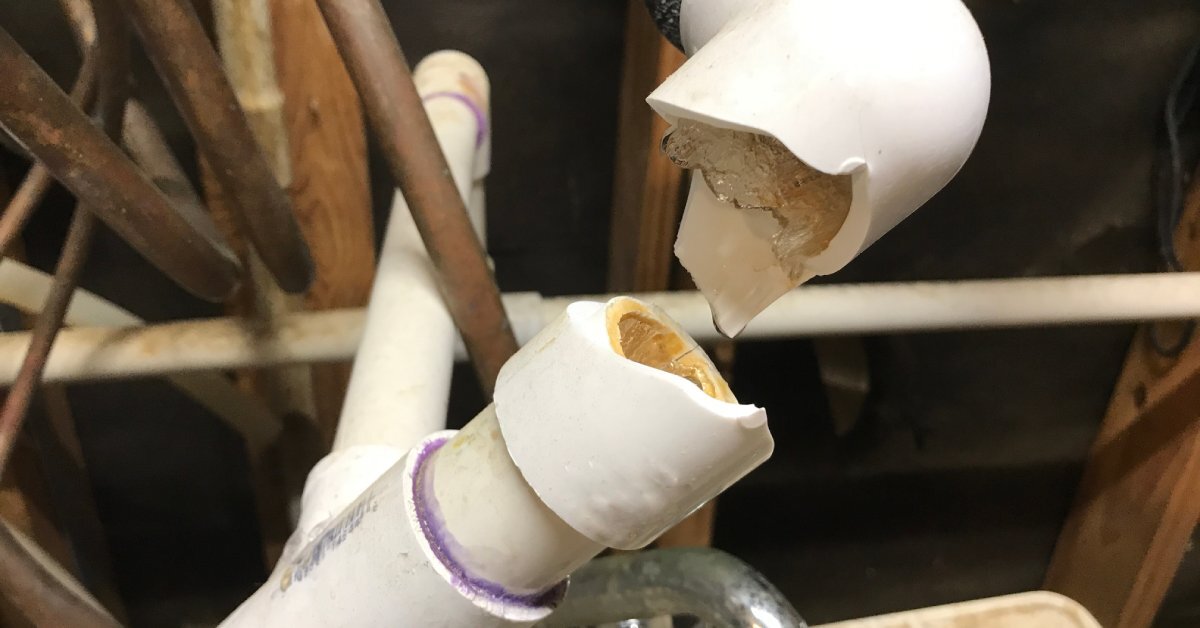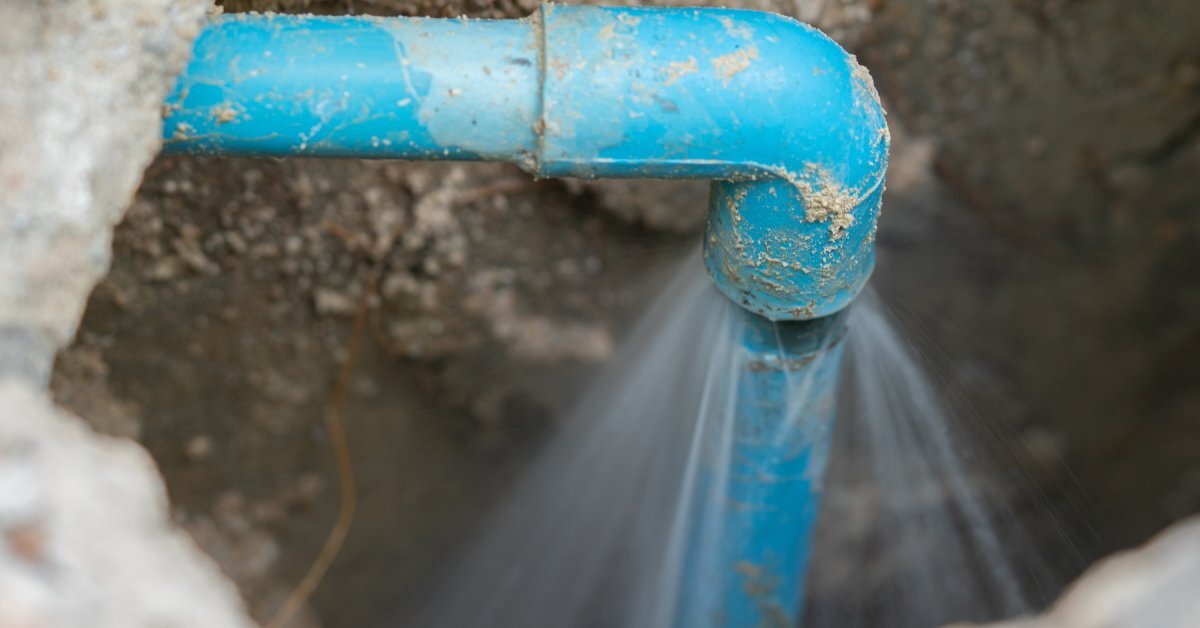13th Feb 2025
How To Repair a Leaking PVC Pipe: Tips & Tricks
PVC pipes are a reliable and widely used choice for plumbing applications, but even the most durable systems can develop leaks over time. If left unchecked, a small leak in a PVC pipe can escalate into a bigger issue, potentially causing water damage, higher utility bills, and disruptions to daily operations in commercial buildings.
For plumbers and contractors, understanding how to effectively repair leaking PVC pipes is essential—not just to fix the current issue, but also to ensure the longevity and reliability of the system. Whether the cause is a weakened joint or a crack in the pipe itself, addressing the issue promptly is critical to maintaining a well-functioning plumbing system.
Check out these tips and tricks for how to repair a leaking PVC pipe now so you’re prepared when issues arise.
The Ins and Outs of PVC Pipe Systems
PVC, short for polyvinyl chloride, is a strong, lightweight material widely used in residential, commercial, and industrial plumbing. Its versatility and affordability make it a popular choice for water distribution, drainage, and irrigation.
PVC pipes are typically connected using specialized fittings and solvent cement, which chemically bonds the components together. This creates a watertight seal, but over time, external wear, temperature changes, and water pressure can cause stress on these connections. Understanding these basics can help you pinpoint where and why leaks may happen, setting the stage for effective repairs.
Identifying a Leak
Leaks in PVC pipes commonly occur due to factors such as pipe aging, improper installation, or external damage. The first step in the repair process is accurately identifying where the leak is originating. Visible signs are the easiest to spot—a telltale drip, pooling water near the pipe, or discoloration on walls or floors can all help to indicate the source of a problem. However, not all leaks are immediately visible.
For hidden leaks, using a pressure gauge is an effective tool. Shut off all of the water outlets connected to the PVC system, attach the pressure gauge to the pipe, and monitor the reading. If the pressure drops without any visible water usage, it’s highly likely that a leak is present. Once you locate the source, it’s time to prepare for the repair.

Preparation
Proper preparation is key to a successful repair. Having the right tools and materials on hand will save you time and help you ensure that the job is always completed correctly. Commonly used repair tools include a PVC pipe cutter, sandpaper, solvent cement, primer, and replacement fittings.
Depending on the type of damage, you may need to obtain additional materials, such as repair wraps or clamps.
It’s also crucial to prioritize your safety during the repair process. Wear gloves to protect your hands from sharp edges and solvent chemicals, and work in a well-ventilated area to avoid inhaling fumes from the solvent cement or primer. Always double-check that the water supply is turned off before beginning any repair work.
Repair Methods
The method of repair you use depends on the nature and location of the leak. One versatile solution is PVC repair fittings, which can replace a damaged section of the pipe without requiring major alterations to the system. For example, you can browse schedule 40 PVC couplings if you need couplings in many variations. A coupling is among the best fittings for replacing a cracked pipe section, but always ensure you’re using the right fit and installation to avoid causing further problems. Overtightening and other installation missteps can cause cracks to form, but a precise setup will ensure a reliable system.
Another option is pipe wraps, which provide a quick and temporary seal around cracks or small damage points. For more significant leaks, solvent welding offers a durable fix by chemically bonding new sections of PVC to the existing pipe.
Each method has its advantages, and understanding which approach to take ensures that your repair will not only stop the leak but also withstand daily pressure and use over time.
Step-By-Step Guide To Repair
When using PVC repair fittings, start by cutting away the damaged section of the pipe with a pipe cutter. Smooth the cut edges with sandpaper to remove any burrs or debris. Apply PVC primer to both the pipe and the fitting, followed by solvent cement. Quickly connect the pieces, ensuring a snug fit before the cement sets.
For pipe wraps, clean and dry the pipe around the leak area. Wrap the pipe with the repair material, covering beyond the edges of the leak for maximum strength. Allow the wrap to cure according to the manufacturer’s instructions before restoring the water flow.
With the solvent welding method, carefully measure and cut a replacement piece of PVC that matches the damaged section. Apply primer to both the pipe and fitting, followed by the solvent cement, ensuring the replacement piece aligns perfectly with the existing pipe. Hold the pieces together for around 30 seconds to secure the bond, then allow the cement to cure before testing the repair.

How To Prevent Future Leaks
Knowing how to repair a leaking PVC pipe is only part of the solution—preventive maintenance is equally important to minimize the risk of future issues.
Regularly inspect all PVC pipes for signs of wear or damage, especially in areas exposed to extreme temperatures or heavy use. Remember to avoid over-tightening any fittings during installation, as this can weaken the joints over time.
Another useful practice is keeping the water pressure within recommended limits, as excessive pressure can place unnecessary strain on the pipe network. Lastly, choose high-quality PVC pipes and fittings from trusted suppliers to ensure durability and reliability from the start.
Ensure Long-Lasting Repairs
By addressing leaks promptly and following the best practices for repair and maintenance, plumbers and contractors can extend the life of PVC pipe systems while ensuring optimal performance. While many leaks can be easily fixed using the methods outlined above, complex or extensive damage may require additional steps and the use of more specialized equipment to prevent recurring problems.
For projects requiring additional tools and parts, don’t hesitate to partner with a trusted supplier or repair specialist who can offer guidance and access to premium materials. With the right tools, techniques, and preventive strategies, you can keep PVC pipe systems functioning efficiently for years to come.

